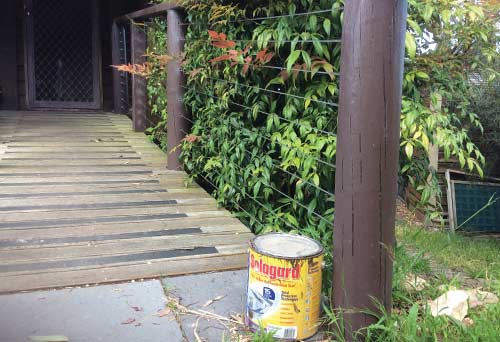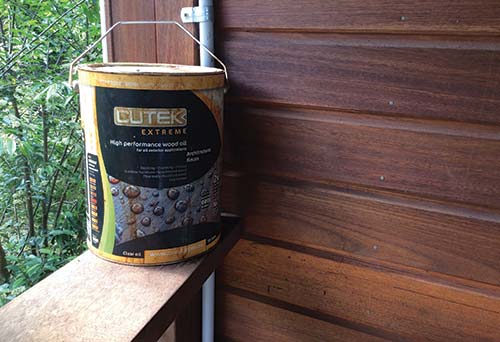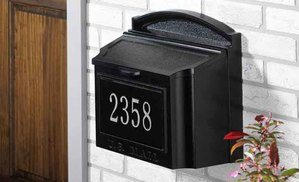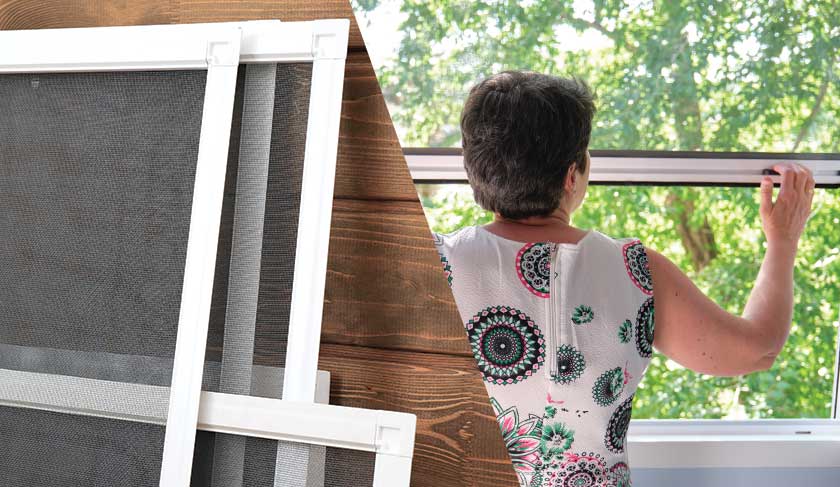Does your deck need refinishing but not sure what to do? In this article we compare the most common deck treatments including staining deck vs painting vs oiling, and explain which is best for you.
A beautiful deck can add life and personality to the exterior of your home. It provides a comfortable gathering place to entertain friends and family or host a party in the summertime. It’s certainly an important addition to your house, and you want it to look just as nice as the master bedroom.
Unlike the master bedroom, though, your deck is pure wood. And because it’s outdoors, that wood will take a ton of battering from the natural elements. Hot, cold, wet, dry. Sometimes all within the same day. Mix that with frequent foot traffic and it’s clear to see why a deck can quickly start to look scruffy.
With proper care and the right treatment, you can keep your decking beautiful and strong for many years.

But what treatment is the right treatment for your deck?
In this article we explain the differences between staining deck vs painting, why use decking oil, and how to choose the best treatment for your needs. We’ll also share a few of our top deck stain, deck paint and decking oil product recommendations if you don’t have time to shop around yourself.
What’s the Difference: Staining Deck vs Painting vs Oiling
| STAINING DECK | PAINTING DECK | OILING DECK | |
|---|---|---|---|
| Protection | Yes: Water, Sun | Limited: May trap water, leading to wood damage | Yes: Water, Sun, Wood Conditioning |
| Application | Easy | Difficult | Easy |
| Colors | Limited Colors | Any Color | No Color |
| Finish | Transparent; Reveals wood grain | Opaque; Hides wood grain | Transparent; Reveals wood grain |
| Re-Apply | 1-3 years | 4-10 years | 6-12 months |
| Ideal Use | Best choice for good timber that you want to show off, but which lacks nice natural color | Best choice for rough, damaged, ugly timber as the paint can hide and seal imperfections | Best choice for premium timber with nice natural color that you want to show off |
Painting vs Staining Deck
Whether to go for staining deck vs painting your deck is a very common question. Ultimately, both methods will protect your deck from moisture and rot. Staining is cheaper and easier to apply. It also covers small holes and sinks into the texture of the wood to preserve it. Where painting offers a wide assortment of colors, staining is typically see-through and was created to highlight and accentuate the natural detail, hue and grain of the deck or porch planking.
Staining vs Oiling Deck
Although similar, stains and oils serve their own purposes. What sets stains apart from oils is that a stain will enhance the deck’s appearance by changing the color. Oil, on the other hand, will enhance the current color, which is great if you want to leave your wood as is.
Oiling vs Painting Deck
Decking oil descends deep into the wood and helps to protect against water and sun damage. It’s also easy to apply and re-apply in the future. Painting does not seep into the wood. Instead, it sits on top, therefore doing a better job filling in cracks and covering imperfections like ugly cuts or fading from the sun.
Pros & Cons of Staining Your Deck
Is your deck made of gorgeous, well-textured wood? Staining your deck allows the beautiful grain to shine through, giving it a very nice, natural appearance.
Pros
- You’re in control of how much of the wood’s color, grain, and texture are visible. Choose from clear, semi-transparent, or solid stains
- Staining your deck will seal off the grain in the wood to prevent moisture from seeping into your deck, causing rot
- Less slippery than paint
Cons
- Deck stain doesn’t last forever. May have to re-stain every year, depending on the quality of deck stain you purchase
- Stain doesn’t fill in large cracks and prevent splinters on the deck
- Doesn’t usually hold well on high-quality wood. Hardwood makes for stunning decks, but they’re dense, and the stain may have a hard time sinking into the surface. If you’re determined to stain your hardwood decks or porch anyway, opt for an oil-based, penetrating strain to ensure the deck is protected
Pros & Cons of Painting Your Deck
The nice thing about painting your deck is that you can leave it sitting for years before it needs to be touched up again. If trusted professionals paint it on, it can last up to 10 years.
Pros
- Your choice of color. Match the deck paint to the rest of your home, or go with an accent
- Hide major flaws. For example, if it’s old and weathered, you may not want to display those details. Painting your deck a lovely color will conceal the deformities and make it look new
- It doesn’t need to be touched up for years
Cons
- A painted deck can trap moisture. Since decks are flat surfaces, rainwater can pool in shallow dips or crevasses and eventually seep through the paint into the wood
- Painting will conceal the distinctive pattern of the wooden planks on your porch. If you enjoy the natural look of your deck, you may be disappointed covering up its beauty

Pros & Cons of Oiling Your Deck
If your deck is in fantastic condition and you’d love for the raw splendor of the wood to stay intact, then a decking oil is a good choice.
Pros
- Rainproof
- Ready for light foot traffic soon after applying, usually within 4 to 8 hours
- Contains UV filters to hinder the effects of sun damage. Normally, darker oils provide better protection than lighter oils
- Assists in trapping natural oils in the wood to keep the planks nourished and supple for a longer period of time
- Prevents cracking, splitting, and warping of the boards
- Easy to apply, clean, and maintain
- Unlikely to peel, flake, or blister off
Cons
- May not be suitable for all hardwoods, depending on the brand. Extra thin or more processed oils may be necessary
- Difficult to over-coat with a decking stain or paint
- The final color of the deck may not be what you expected

How to Choose the Right Paint, Stain or Oil for Your Deck
Now that you know the pros and cons of staining deck vs painting deck vs oiling, how do you decide which is best for YOUR needs?
First, consider the condition of your deck.
If your deck is new and still smells of fresh-cut wood, it may be a good idea to leave it to weather naturally for about six months first. Doing this will help make sure any existing treatment already on the wood has decayed to allow the new coat of decking paint/stain/oil to properly sink in and stick.
What style of lumber is your porch mostly made of? Is it high-quality, dense hardwood? If so, it may be a bit harder for decking oils and stains to soak into the surface.
Is your deck old and weathered? Do you just want to hide the flaws and cracks? Painting over the porch/deck might be your best option.
Deck Paints
If your deck has some major flaws you’d like to hide, consider painting it. The best part? Your color choices are nearly unlimited.
Before you begin, make sure the paint is made for horizontal surfaces.
Many exterior paints are created to be applied to vertical surfaces, like walls or posts. Double-check that your paint is made specifically for flat structures (ie: your deck) so you don’t find yourself redoing it multiple times a year.
Types of Paint for Deck
Oil-Based Deck Paint
- Tough, durable, and affordable
- Can last 5 to 10 years
- Great moisture protection
- High in volatile organic compounds (VOCs); gives off fumes that can lead to watery eyes, a sore throat, or other issues if inhaled
- Needs a solvent, such as paint thinner, to clean brushes and rollers
- Can take up to 24 hours to completely dry
Water-Based Deck Paint
- Low in volatile organic compounds (VOCs)
- Can last 4 to 8 years
- Best protection against sun fading
- Less cracking and peeling due to certain key ingredients
- Dries quickly. Ready to recoat in 4 to 6 hours
Deck Paint Texture and Finish
Flat: No sheen. Good for hiding flaws.
Eggshell: Has a slight sheen of about 10%. Provides a soft finish.
Satin: Also called “low luster.” A muted sheen of about 30%.
Semi-Gloss: Also known as “enamel”. This deck paint has about 70% sheen, which produces a surface that is easy to sweep and clean.
High Gloss: Very easy to keep clean. Best paint choice for newly-built decks. However, because it has about 85% sheen, it’s easier to see nail holes and chunks of missing wood.
Decking Stains
The ultimate purpose of deck stain is to protect and enhance your deck’s wood while remaining transparent so you can still sense the flow of natural grain underneath.
When choosing a color to stain your deck with, keep these things in mind:
- Which shade of decking stain will complement the color and designs of your home and surrounding scenery?
- What sort of lumber is your deck built from? A stain used for cedar or redwood decks will be different from pressure-treated wood
- Test the deck stain on a sample piece before applying it to your entire deck. Wait until it has dried to see what the finished color will be
Staining New vs Old Decks
Staining New Decks: Consider a lighter and more transparent stain. It’s easier to go dark later if you decide you want a change.
Staining Older Decks: Going darker and denser can hide imperfections better
Deck Stain Opacity
Clear: Great for porches with nice organic coloring and quirky grain patterns that you would like to keep displayed.
Semi-transparent: A touch of color that still permits the wood’s unique characteristics and designs to shine through.
Semi-solid: Heavier color but still able to see the wood underneath. Great for transitioning as your deck ages and some minor flaws pop up.
Solid: Darker, more uniform look. This level of stain will hide most of the wood’s natural elements.
Decking Oils
Decking oils sink into the timber, waterproofing and replacing natural oils. Using this method will leave a subtle, semi-transparent color that increases the beauty of the wood. Older wood benefits from oiling, especially if you’ve noticed hairline cracks that require attention.
Some Benefits of Oiling Deck
- Less warping, cracking and splitting of the wood
- Less embedded grime and dirt from foot traffic
- Protection from the sun’s UV rays
- Some brands offer slip-resistant decking oils to help keep you safe in damp weather
- Can last 2 to 3 years
- Prevents the growth of mold and algae
Types of Decking Oil
Clear: Designed to nourish and protect while preserving the natural character of the timber. Not all clear decking oils contain UV filters.
Colored or Pigmented: Great for changing or restoring the appearance of your deck. Stronger UV ray resistance.
Anti-Slip Decking Oil: Contains small particles that bond with the decking surface to create a slightly textured layer when dry. Ideal for oiling the steps of your deck.
Best Stain for Decks
Ready Seal: Exterior Stain and Sealer for Wood
Ready Seal Wood Stain and Sealer – More info on Ready Seal website
Product Features:
- Enriches the beauty of the wood
- The unique texture and grain of the timber remain visible
- This oil-based, semi-transparent deck stain is mixed with sealer so you don’t have to buy a separate product
- Never has runs or streaks so you rarely have to back-brush
- Use a brush, roller, or sprayer for easy application
- Range of 10 different deck stain colors including cedar, mahogany and pine
The Good:
- Suitable for all outdoor wood projects
- Doesn’t require a primer to be applied, which makes for a simpler, faster process
- No need for diluting or thinning prior to spraying
The Bad:
- May need to re-stain your deck sooner than some other brands
Best Paint for Decks
KILZ: Porch & Patio Latex Floor Paint
KILZ Porch and Patio Floor Paint – More info on KILZ website
Product Features:
- Very durable
- Easy to clean
- Resistant to fading, cracking, flaking, and scuffing
- This deck paint is formulated to endure in all types of weather conditions
- Multi-surface use for wood and masonry, trim, siding, and trellises
The Good:
- Dries quickly
- Can cover unwanted odors
The Bad:
- In some cases, may need to re-paint your deck in less than a year
- Limited paint color choices
Best Decking Oil
Ronseal: Ultimate Protection Decking Oil
Ronseal Ultimate Protection Decking Oil – More Info on Ronseal website
Product Features:
- Rainproof in 90 minutes
- Natural look decking oil
- The unique formula decking oil penetrates deeper into the wood than other brands can
- Works on soft- and hardwood; smooth and rough surfaces
The Good:
- Easy to apply
- Fast absorbing
- Multiple color choices with this brand of deck oil
The Bad
- Contains benzisothiazolone, which may cause allergic reactions
- Contains sensitizing substances, which may also cause allergic reactions
- Difficult to find in USA
Frequently Asked Questions
Common Questions on Staining Deck vs Painting vs Oiling
Can you paint over stained wood deck?
Yes! A stained deck can easily be painted over
Can and should you oil over a stained deck?
No. Don’t apply oil over deck stain. Doing so creates a layer that water can get between, which will cause peeling
How long does deck paint last before you need to repaint?
It varies by the type of paint you use. However, quality paint can last up to 10 years
How long does deck stain last before you need to re-stain?
Typically, 1-3 years depending on brand and type of stain
How often do you need to oil a deck?
Once every 6-12 months. Watch for signs of wear and weathering
Can you paint a composite deck?
Yes! A composite deck can be painted, ideally using latex paint for added strength
Final Thoughts on Staining Deck vs Painting vs Oiling
Any deck left untreated will quickly succumb to the damage of weather and fade under the sun. Whether you are looking at staining deck vs painting vs oiling, all options will keep your deck looking amazing and prevent structural damage from rot, mold and insects.
Remember to consider the age of your deck and what type of wood it’s crafted from when deciding whether to paint, oil, or stain the deck.
Painting your deck is great for a wide assortment of colors and to hide obvious imperfections. Staining your deck, on the other hand, really highlights and brings out the natural flow and texture of the wood. And lastly, decking oil will keep the planks on your deck nourished and supple for extended life expectancy.
Whichever you choose, all three will waterproof, preserve, and increase the survival of your deck with minimal upkeep so you can enjoy it for years to come.
Now that you’ve made your choice, you’ll need to think about applying it. Check out our selection of the best paint sprayers and stain sprayers for outdoors, to speed up your job and get a pro finish.
Author
-

Hi, I’m Rach, the other half of NestKoo. I grew up on a sheep farm in Australia where I spent most weekends in the yard fixing or constructing something or other; essential DIY skills that I still use today at home or helping others.
View all posts









